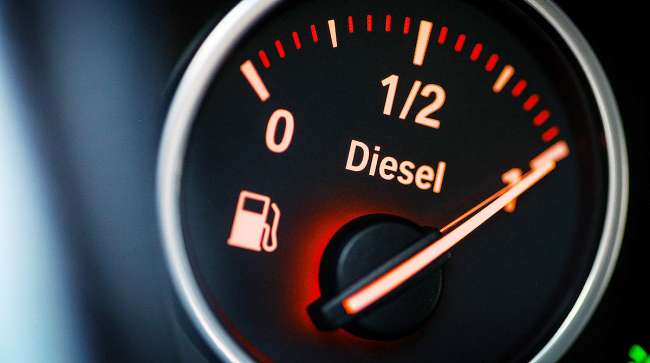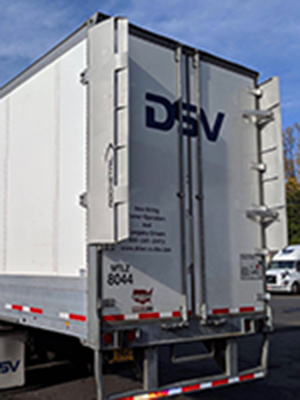Staff Reporter
Diesel Soars 9.4¢ a Gallon to $3.081; Oil Falls

[Stay on top of transportation news: Get TTNews in your inbox.]
The U.S. average retail price of diesel soared 9.4 cents to $3.081 a gallon, the Department of Energy reported Sept. 23, bolstered by a crisis in Saudi Arabia after a drone attack on a major oil plant Sept. 14.
This is the first time diesel topped an average of $3 per gallon since Aug. 12, when it hit $3.011. Diesel had hovered over $3 per gallon since February, when warmer weather arrived. But a bearish oil market arrived in mid-August and drove retail diesel prices below a U.S. average of $3.
Trucking’s main fuel costs 19 cents less than it did a year ago, when it was $3.271, DOE said.
U.S. average #diesel fuel price on 9/23/2019 was $3.081/gal, UP 9.4¢/gallon from 9/16/19, DOWN 19.0¢/gallon from year ago https://t.co/TsJSgv4BtB #truckers #shippers #fuelprices pic.twitter.com/y4ZgcVpRQh — EIA (@EIAgov) September 24, 2019
Diesel prices in all regions saw the average price rise. The highest jump was 11 cents a gallon in the Midwest, where the average price was $2.992. The smallest increase was in New England, where the price went up 5.7 cents to $3.070.
Also, the national average price for regular gasoline jumped 10.2 cents to $2.654 a gallon, DOE’s Energy Information Administration said.
All U.S. regions saw average gasoline prices rise. The Midwest again posted the largest increase at 12.9 cents to $2.585 a gallon. The smallest increase was again in New England, where gasoline rose 1.4 cents to $2.556.
U.S. average price for regular-grade #gasoline on 9/23/2019 was $2.654/gal, UP 10.2¢/gallon from 9/16/19, DOWN 19.0¢/gallon from year ago https://t.co/O14EsVVwRN #gasprices pic.twitter.com/Yt2q9XunR1 — EIA (@EIAgov) September 24, 2019
The upward tick in price will mean a higher cost for consumers, if only in the short term. Fleets often brace themselves for sudden upward changes in prices by using updated fuel surcharges, which pass the cost on to the consumers.
“UPS updates its fuel surcharge periodically to reflect the changes in the costs we incur,” said Glenn Zaccara, UPS Inc. director of corporate media relations. “The impact of these adjustments is included in the price we charge our customers.”
But fleets such as UPS are wary of letting the surcharges pinch their business.
“Our delivery charges are competitive,” Zaccara said in an email to Transport Topics.
Upward surcharges may not last too long, as the price of crude fell below $60 a barrel Sept. 25, with the tension in the Middle East easing.
The oil market has been whipsawed as the attack on a Saudi Arabian fuel facility led to finger-pointing at Iran, Saudi Arabia’s No. 1 enemy in the region.
Despite the political and foreign-policy uncertainties around the world, West Texas Intermediate for November delivery settled 1.4% lower at $56.49 a barrel on the New York Mercantile Exchange on Sept. 25.
It was the lowest oil price since Saudi Arabia’s oil industry suffered drone attacks Sept. 14. State oil producer Aramco boosted total capacity to more than 11 million barrels a day, according to Bloomberg News — a week earlier than forecast, easing traders’ concerns.
Phil Flynn, an oil analyst with Price Futures Group of Chicago, said Saudi Arabia has improved production, but there is a reason to still be a bit bullish on oil.
“The refining of that oil is still problematic,” Flynn told Transport Topics. “The processing-plant damage is going to take months to fix.”
Flynn said production is one thing, but buyers may not want to ship untreated oil. Oil prices will climb further because the global economy will perk up, Flynn predicted.
But there also are political fears, largely stemming from the impeachment inquiry regarding President Donald Trump, announced Sept. 24 by House Speaker Nancy Pelosi (D-Calif.), after Trump pressed Ukraine’s president to “look into” his Democratic political rival Joe Biden during a call July 25.
Another is fear from the ongoing U.S. trade standoff with China.
Such political and policy matters could drive the oil price up, leading to higher fuel costs.
The need to reduce the costs of diesel for fleets is a constant in the trucking industry, and some companies are stepping up to help, including Rocketail of San Diego, which sells an aerodynamic product that reduces rear drag on trailers.
The product works as an attachment to the trailer and can be retrofitted in one hour, or installed by manufacturers in 20 minutes, according to Bren Marshell, vice president of sales.

The Rocketail Wing (Rocketail)
Marshell said the Rocketail system, as it is called, is 80 pounds and fits on the rear top and rear corners of the trailer. The three sides, made of plastic and stainless metal, look like rectangular wings, directing wind away from the trailer. The device is a multielement airfoil like those found on jet aircraft, according to the company’s website.
“As the trailer passes through air, the shape of our side wings and the top element speed up the air and move the air into the vortex being created by the trailer,” Marshell said.
The Rocketail system does not include trailer skirts, another aerodynamic feature for trailers, but works well with them, Marshell told TT.
He said the products are verified by a third party to save 3.36% of fuel.
UPS ranks No. 1 on the Transport Topics Top 100 list of the largest for-hire carriers in North America.
Staff reporter Roger Gilroy contributed to this report.




